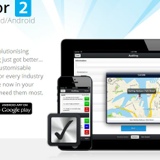Information
-
Document No.
-
Audit Title
-
Client / Site
-
Conducted on
-
Prepared by
-
Location
-
Personnel
RGRPSH202A Assist with transportation of horses
Horse is prepared for transport in 10 minutes
-
* When bandaging legs & maintain a safe working position of 10cm to the side of leg & squatting with bent knees and straight back
-
* Apply wound cover and padding layer (If Applicable)
-
* Ensure bandage is rolled ready for application
-
* For near (left) side legs with the end of the bandage secure to the top inside of leg and pull towards the front of the leg in an anti-clockwise direction. In a downward motion continue to overlap the rows & and then up again until entire bandage is used
-
* For off (right) side legs with the end of the bandage secure to the top inside of leg and pull towards the front of the leg in a clockwise direction.
-
* In a downward motion continue to overlap the rows & and then up again until entire bandage is used
-
* Secure with Velcro or PVC Tape
-
Sign and date
-
* Check for injuries
-
Transport is checked for safety and attached to vehicle
-
* Float is positioned for attachment to pulling vehicle on a flat landing area with coupling over Tow Ball
-
* Using jockey wheel and with hand latch open coupling is lowered over and onto tow ball & once coupling attached to tow ball latch is released
-
* Jockey wheel is stored
-
* Safety Chains attached
-
* Electric points attached
-
* Indicators & Brake & Tail lights checked
-
* Other checks include tyre pressure and petrol levels
-
* Un attach in order electric points and safety chains
-
* Reposition Jockey wheel and with hand latch open coupling is raised out of and above the tow ball
-
* Vehicle is moved away from float
-
* Vehicle and Float is cleaned
-
Signature
-
Horse is loaded and unloaded safely
-
* Lead the horse to the predetermined Float and Vehicle set up
-
* Lead the horse up the float ramp
-
* Once on float & person 2 position centre divider and close tail bar.
-
* Move to front of horse and tie up
-
* When horse is secure & person 2 close tail gate and float door
-
* To unload the horse & reverse loading procedure
-
* Unclip horse
-
* Open Tail gate
-
* Allow horse to reverse off with no/limited halter pressure
-
* Lead horse to predetermined holding area.
-
Methods of loading difficult horses are demonstrated.
-
* Lead bit applied and placed on. Fan right hand and use left index finger to open mouth by placing finger in corner of mouth. Fold ears under and neaten forelock.
-
* Rump rope is sized/positioned with knot at wither and rope loop hanging around gaskin & rope is the placed through halter and hangs with lead.
-
* Horse is led onto ramp holding both lead and rope however rope has pressure & lead has no pressure.
-
* Ear Plug 1 is placed into near side ear secured with band or tape & Ear Plug 2 is placed into off side ear and secured with band or tape.
-
* Blind fold & using folded towel & edges are tucked in halter to obscure sight
-
* Bucket of feed is held just in front of horses mouth and used as an aid to move horse into float
-
Signature
-
Horse is released safely back into yard
-
* Lead horse back to predetermined holding area (Yard or Box)
-
* Ensure space and horse straightness when leading through narrow opening such as gate
-
* Lead horse through gate and face horse while completing this
-
* Turn horse around to face gate and shut gate
-
* Standing to the near side release halter and remove
-
Stable reporting methods are known
-
* Stable diary is accessed and used to notify issues that arise during transportation
-
Signature








